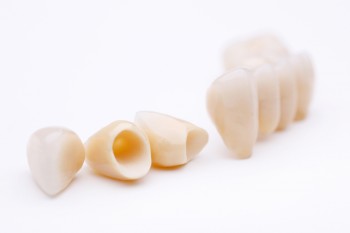Crown / Bridge Fell Out

Emergency Dental Bridge Repair in Roseville California
Crowns and bridges are broken, are bonded to supporting teeth underneath. From time to time, they may fall out for one reason or another. Although in most cases people do not experience any level of discomfort, the significant size of the restorations can dramatically impact the way your mouth feels and functions. Dental bridge repair cost you can find out by phone.
What To Do
When a crown or bridge falls out, it’s important to save your restoration. Keeping it in a zip-top bag is adequate and can keep you from losing it before you can get to the dentist. Call your emergency dentist to set up an exam; if it’s a front tooth, you’ll want to try to get in the very same day.
Be sure to bring your crown or bridge with you in case it can be bonded back into place. Your emergency dentist will check the structure of the supporting teeth to see if it is sound enough to continue supporting the restoration. When at all possible, your emergency dentist will simply cement the crown or bridge back in place. If the supporting teeth are not sound enough, your emergency dentist may recommend re-treating the area with a new restoration or offering another type of tooth replacement. Dental bridge repair cost you can find out by phone.
Potential Causes
Full coverage crowns usually fall off for one or two reasons:
New Decay Under or Around Your Crown / Bridge
A high percentage of crowns and bridges that fall off are attributed to recurrent tooth decay on the supporting tooth. Even though the crowns cover the majority of the tooth above the gumlines, there is still an exposed surface area along the margin of the crown. That means food, bacteria, acids, and decay causing microorganisms can cling to the tooth; if the tooth is not cleaned properly each day, new cavities will develop. These small cavities start out at the margin of the crown, but then expand deeper into the tooth, causing it to decay so much that there is nothing left for the crown to adhere to.
Improper Bite Relationship
If your teeth are broken or biting together in an unnatural pattern, it can create pressure points that don’t disperse across the crown or bridge. A new bridge repair or crown may have an area that is too “high” on the chewing surface, making it hit harder than other areas of the restoration. Your dentist can examine your occlusion with marking paper and make adjustments as needed.
Risks Of Not Treatings
Until you make it to the office, avoid chewing on your tooth that is affected. The weaker tooth structure won’t be able to withstand normal functions, and you could cause it to break further apart. If too much structure is broken off or decayed, there will be nothing left for a crown to adhere to. In some cases the tooth can still be restored if a pin is used to provide additional support.
Lack of adequate tooth surface leaves only one other option: extraction of the tooth. If you have a bridge, that means having even more missing teeth to deal with. Thankfully, tooth emergency replacement options such as implants and partial dentures are an effective way to replace single or multiple missing teeth at one time.
If you’re left chewing on only one side of the mouth, that side can develop abnormal wear and even strain to the TMJ.
Benefits Of Treating
Replacing your crown or bridge repair not only returns the chewing function back to that area of your mouth, it also preserves tooth spacing in other parts of the mouth. When there is not a tooth to bite against, the opposing tooth can erupt further out of its socket, making it feel “longer” inside of your mouth. A missing crown / tooth between other teeth can cause those teeth to lean into the open area. By preserving spacing patterns, you help prevent other teeth from coming out of alignment, and also avoiding an increased risk of tooth decay and gum disease.
There’s nothing quite like having your own natural teeth. Crowns and bridges are often the last line of defense when it comes to maintaining normal tooth function. Taking care of your mouth sooner helps you have a stronger, healthier smile.
Alternative Treatment
If you’ve lost a bridge or have to have a tooth extracted due to not repairing it with a crown, you’ll be left with deciding which type of tooth replacement treatment is a better option for you.
Some examples of effective tooth replacements are:
- Dental implants
- Implant supported bridges
- Removable partial dentures
Your choice will depend on the number of missing teeth, your goals, and any budget that you may have. If your teeth are past the point of repairing with a crown or bridge repair, ask your dentist which option is best for your smile.


